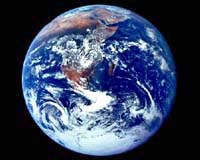
 |
The storms, which soak up toxic pollution as they cross China's heavily industrialized northern areas, are five times more frequent than they were five decades ago, they said.
The storms figure high on agenda at the UN Environment Programthree-day conference here for environment ministers and officials from more than 150 nations.
UNEP executive director Klaus Toepfer said the hazardous sandstorms were evidence of "the globalization of environmental problems."
"We are worried about the creep of environmental problems -- their disrespect of political boundaries -- and the way they threaten to compound and disrupt the function of major natural systems," Toepfer said.
"We are seeing a globalisation of environmental problems ... and we need urgent and coordinated action from governments, businesses and civil society groups to address it."
Scientists told the UNEP conference a chief concern is that the sandstorms bind with airborn pollutants such as poisonous heavy metals as they travel over northern China and dump their toxic load elsewhere.
The storms are blamed for the disruption of communications, respiratory problems and related deaths, particularly among the elderly and children, as well as losses of livestock and crops.
The storms generally occur during North-east Asia's spring season. April is a key month and earlier this week northern Chinese cities including Beijing were choking under thick a cloud of yellow dust.
The Korea Meteorological Administration (KMA) said high winds had driven the sand over the peninsuala late Tuesday and early Wednesday.
The storm was expected to blow through the peninsula and to travel as far as Japan, Hawaii and the western seaboard of the United States, KMA officials said.
KMA scientists said dust levels in the South Korean capital of Seoul in April 2002 were twice the level deemed hazardous to health.
Chinese people call the sandstorms "Asian dust, while South Korea and Japan describe the phenomenom "yellow dust" and "Kosa" respectively.
In China, the latest yellow dust storm choked 70 million people in the country's northern provinces with visibility in some parts falling to 100 meters (330 feet).
UNEP's Global Environment Outlook Yearbook 2003, an annual report on the health of the planet released earlier this week, blamed the increased intensity of the storms on the expansion of the Gobi Desert in China which is threatening the livelihoods of some 400 million people with desertification as it creeps eastwards.
The UNEP said it was allocating part of its one million dollar fund in assisting governments with joint work for monitoring and early warning of dust and sandstorms.
Recent scientific reports suggest that dust storms from the Sahara are being linked to algal infestation of Caribbean coral reefs.
TERRA.WIRE |